
Kiai and Aiki are two highly debated concepts in the world of Budō. Often attempts at explaining them range from science fiction inferences to true simplifications
by ADRIANO AMARI

As it often happens in Eastern culture, Kiai and Aiki are essentially “natural aspects”, which can be known through analogical imitation or the osmotic passage of knowledge from one Heart/Spirit to another Heart/Spirit. In this set, one of the subjects may very well not be a human or a living thing.
This article is a reflection on the role of Kiai and Aiki in Martial Arts, using Aikidō as a training ground. It is possible to adapt it to any Martial Art and, in extension, to Life and Existence.
Kiai and its Disappearance
A stimulating starting point for our reflection is how Kiai as a concept and action has been “suppressed” by today’s mass Aikidō. At most, you have a sound expression or Kakegoe. We have interesting information on the subject, provided by Minoru Mochizuki sensei, who was one of the main students of Morihei Ueshiba from the 1930s until the death of Ō Sensei [1]. Throughout Morihei Ueshiba’s life, Kiai has always been a staple of the practice as clearly stated by the founder [2].
From the Founder’s time, in speeches and practice both, reference has always been made to “Ai” and “Aiki” only.
A similar fact happened in Jigorō Kanō sensei’s Kōdōkan Jūdō, where the Gō aspect, complementary of Jū, although fully present in Kanō sensei’s practice and often mentioned in his writings, has been gradually hidden. Go is a fundamental element in many sections of Nage no Kata, Katame no Kata, Kime no Kata, Koshiki no Kata, sections that work precisely through the Go principle [3].
Analysis
Aiki and Kiai are words formed by the same ideograms – which, contrary to what one might think, given the high number of homophones present in the Japanese language, is not an absolutely obvious fact at all.
AIKI (合氣)
KIAI (氣合)
They constitute one of the numerous pairs Yang/Yin, Omote/Ura, Tatemae/Honme that are a common but not easy to understand facet of Japanese philosophy. They are two distinct aspects of a single reality, “not one, not two”, absolutely inseparable.
A basic concept that regulates them is that one “does not work” without the other, it cannot generate itself in the other’s absence and, if it loses its complementary opposite, it is immediately destroyed.
Let’s briefly analyze KI (氣), which is the core of the two concepts, while AI (合), depending on how it is positioned in the word, defines the “way” in which Ki is expressed.
The word Ki has been given many meanings, and the same meanings have often been misinterpreted. In this essay, we assume its connection with the respiratory act and assert its absolute “naturalness”, its regular presence that accompanies us throughout our life. Mochizuki sensei emphasized the meaning of Ki as “Inspiration/Inhalation”. This means that both Kiai and Aiki, through breathing, accompany us throughout our existence, flowing in it like the water of a stream.
Same goes for Ai, which expresses harmony and affinity. As we said in the context of the two words, Ai refers to Ki and its position explains how the latter manifests itself. In both combinations, Ki is “marked” by Ai so that it constitutes a balanced whole, made up of various elements. They include the environment, the conditions in which we are and act and those that surround us, and more.
In the practical manifestation of KIAI, the action is a direct one. It is not necessarily straight, however, it must in any case “cut” the opponent, his intention, his technique or his position. This action “breaks” or overwhelms the opponent’s Ki. This fracture affects position and action together. In nature, it may very well happen as the consequence of an act of “Brute Force” (an excess of force, speed or resistance), but in Martial Arts it must be the result of the “best use of energy”, implemented in the greatest possible economy (energy, movement, time).
About Kakegoe
The sound expression of Kiai is called “Kakegoe”. It is an aspect of it that is both necessary and not, since Ki-Ai is above all an expression of unity and will in the three elements of body/mind/spirit. This expression can also not be “voiced”. However, Kakegoe is important and, in most cases, it is appropriate to express it.

In contemporary Gendai Budō, Kakegoe is in most cases taught correctly as a respiratory action and – less often – also from the mind/spirit point of view [4], but this is just basic instruction. More in-depth teaching distinguishes the tones and sounds of the Kakegoe according to action and opportunity, tones and sounds that vary according to the type of action that is performed (or that we are receiving) and its composition (single or multiple movements), according to the Taoist laws of the Five Elements [5].
Since Kakegoe mainly depends on the quality of the mental/spiritual element, it is the expression of the determination that is physically manifested with the propriety of the action itself. This “cry” is not always necessary – sometimes it must be “silent” – but sonorous or not, it is there, otherwise Kiai as an action loses much of its effectiveness. Obviously, even if there is no vocalization, there is still the exhalation, which links or concludes Kiai.
Since Kakegoe mainly depends on the quality of the mental/spiritual element, it is the expression of the determination that is physically manifested with the propriety of the action itself. This “cry” is not always necessary – sometimes it must be “silent” – but sonorous or not, it is there, otherwise Kiai as an action loses much of its effectiveness. Obviously, even if there is no vocalization, there is still the exhalation, which links or concludes Kiai. That is because Kiai is not, as it sometimes seems, a single event in a single action: a compound technique, with neutralizations and counterattacks, or feints, combinations, or more, can entail more partial Kakegoe up to a final one. This “partial Kiai” uses only two-thirds of the air contained in the lungs. In these multiple actions, it can be observed that there are one or more passages from Kiai to Aiki or vice versa.
KI-AI-KI
We are getting to Aiki, but first we have to complete Kiai. The respiratory rhythm is not like the simple physical breathing, rather a sensitivity that governs our breath in quantity, cadence and quality, according to the perception of those in front of us.
To have Kiai you need to have a centralized and rooted base. Guard and Position express a polarization of energies and possibilities, and this is a first reciprocal relationship with the opponent. Without it, the breathing also fluctuates, our energy is not stable and it is difficult to focus. Movement adds other data to be calculated, and also the direction from which the opponent will lead the attack and the one in which we will act.
The Ki-Inspiration concept is also explained by the fact that our lungs need to be charged when the action switch clicks on. The previous evaluations establish how much energy must be used to overcome that used by the opponent.
Kiai is initiative, the active technique that “cuts”. Aiki and Kiai are the heart of the technique that comes from Kenjutsu, from the sword, from the sword that developed Aiki Jutsu [6]. Kiai is the attack, the slash or the first initiative thrust that is launched at the perception of the opponent’s moment of “void” (虚 – Kyō [7]), slash and jab that become Irimi and Atemi in Tai Waza. It is also what causes the opponent’s balance to break when blads cross (Kuzushi), which in turns becomes Shinoji no Te [8] in empty-hand techniques.
Kiai is action on action according to the three times (before/during/after), taking advantage of the moment of emptiness that exists during the attack action itself. Preventing this “void” (Kyō) from happening is very difficult: the body/mind/spirit has to stay “free”. Here we enter the domain of “Mental Void” (Muga-Mushin) and continuous circle of action. This circle is a line that comes from a point and rotates (En, 丸). They are difficult to obtain if the practice does not reach the limit and Seme, “Threat” or danger is not present.
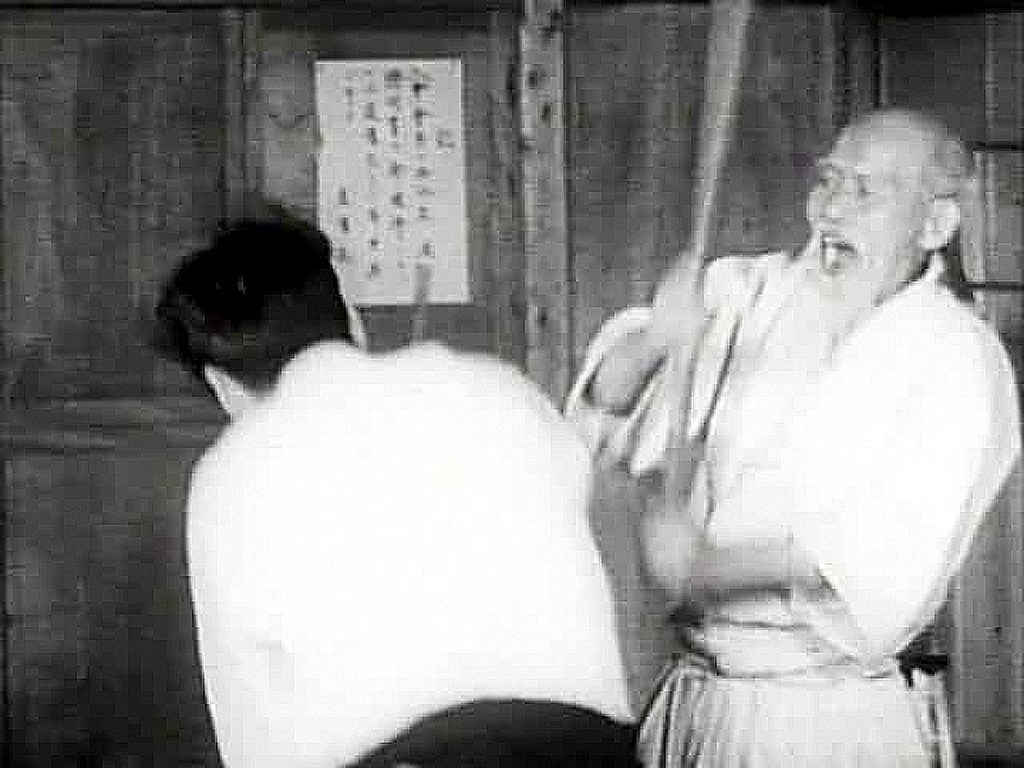
We are still considering the field of action of the swordsman, but this can and must be carried on an equal footing in empty-handed practice. We are in a Kiai/Aiki force field, action passes from one to the other and then returns. It can be born as Kiai, then move on to Aiki and end in Kiai, or start in Aiki and then end in Kiai. However, Aiki alone is not enough and cannot exist.
Let’s now take a look at the Aiki domain.
As in Kiai, breathing, timing, initiative and “aggression” of the technique are necessary elements. The fact that “Ai” is before “Ki” indicates that energy follows harmonization, that is, the action avoids direct contact (it is rather dodging, deflecting) and unbalances to counterattack. The counterattack is Kiai again. In general terms, an evasion of force is Aiki, action and counterattack are Kiai. As Minoru Mochizuki sensei’s instruction (Kuden) says: “Aiki is the Ura of Kiai”.
Without Kiai there is no Aikidō.
We are now going to refer to an important consideration by Jigorō Kanō sensei on Jutsu and Dō. It relates to Jūdō but it can be easily applied to Jū Jutsu and all Bugei disciplines: “(…) Once you understand what the content is about, the names become secondary and you can use “Jūjutsu” if you emphasize the technique, or “Dō” to emphasize the Way and understand “the principles of the Way” (…) according to the common understanding, Jūjutsu is part of Bujutsu (warrior art) as is Kenjutsu (handling the sword)…”
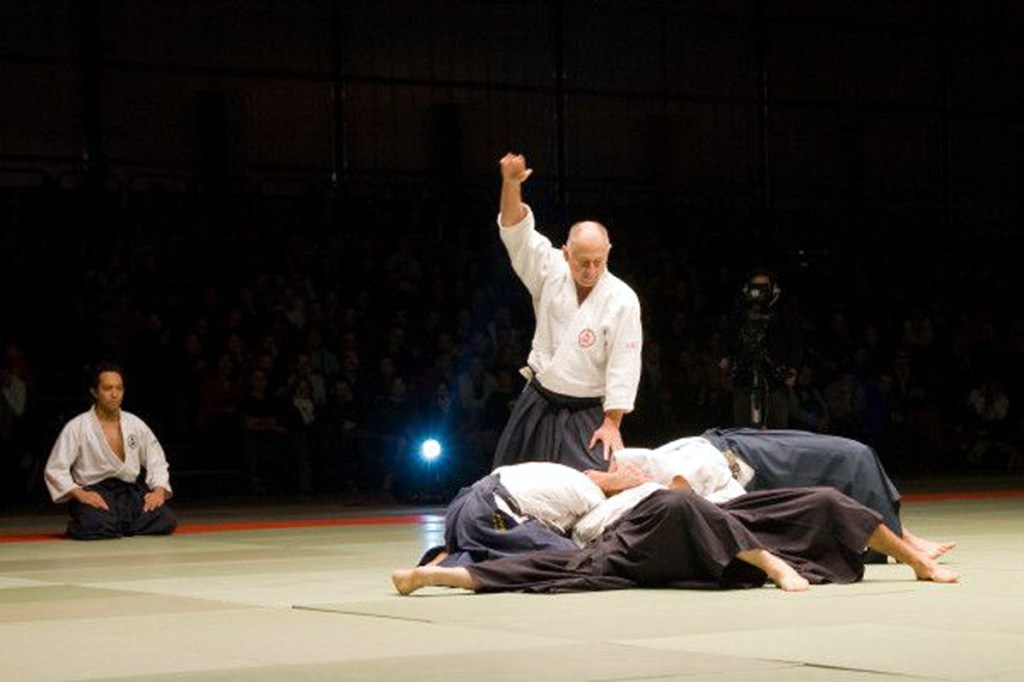
Aikidō without Kiai?
The problem of contemporary Aikidō is this generalized elision of Kiai from both practice and mental attitude. The exception to this general behaviour is found only in certain teachers or certain styles, such as the Aikidō originating from Minoru Mochizuki Sensei (Aikidō Yōseikan and Aikibudō).
The first deficiency to report is in the attack: the majority of the attacks against which the techniques are then carried out are not only elementary and wide (which can be understandable when the beginner starts training), but often also lacking in timing, distance and energy (Hyōshi, Ma-ai and Kiai). As a result, everything else is distorted, and this is true both in Tai Waza and in the practice of Sword, Jō and Tantō.
In response to the attack, Kiai intervenes immediately in the Omote response. Example: on Shomen Uchi with a Robuse response (Ikkyo – Irimi). The interception and the initial imbalance is Kiai, the displacement and reach to the ground is Aiki, the blocking and/or the Atemi again is Kiai.
Aiki intervenes in the Ura type of response. Again, taking a Shomen Uchi attack as a model, we have the evasion, catch and rotation that are Aiki, then the block or throw and/or the final Atemi that are Kiai.
Obviously, the above is a simplified representation. The changes between Aiki and Kiai (and between various types of Aiki and Kiai) are often multiple and continuous, both in single actions and in combinations.
Since Aiki is the Jutsu that comes from the Sword, the correct knowledge of the sword technique, perhaps through training in a Koryū, is, in my opinion, a possibility that the Aikidōka should carefully consider. It should be remembered that Takeda Sokaku sensei (Ono-ha Ittō Ryū, Kyōshin Meichi Ryū and Jikinshinkage Ryū), Morihei Ueshiba sensei (Yagyū Shingan Ryū, Kashima Shintō Ryū), Minoru Mochizuki sensei (Tenshin Shōden Katori Shintō Ryū, Ryū, Musō) Sugino Yoshio sensei (Tenshin Shōden Katori Shintō Ryū, Kendō, Yōshin Koryū Jūjutsu) all had a strong and deep knowledge of the sword technique.
The study of the sword can better explain the action of the body. It makes perceive more clearly the opponent’s physical, mental, spiritual Kuzushi (imbalance/opportunity) and, at the same time, makes you better aware of your own balance and energy. I am afraid that no, Aikiken is not enough…
Oggi occorre riportare il Kiai nell’Aikidō. Strutturare correttamente gli attacchi, “realizzarli” nel senso di renderli “reali”, nelle progressioni lavorare su attacchi multipli. Poi occorre che sia chiara la successione di Kiai e Aiki nella tecnica, nel movimento.
There are educational exercises, Kihon, to start with. They should not be neglected to go after the eubiotic or socializing aspects only. It also takes the sociability of Ai-Uchi, the charity of the fist, the inseparability of sweet from sour.
Reality is harsh, but it is true.
Copyright Adriano Amari ©2020
All rights are reserved
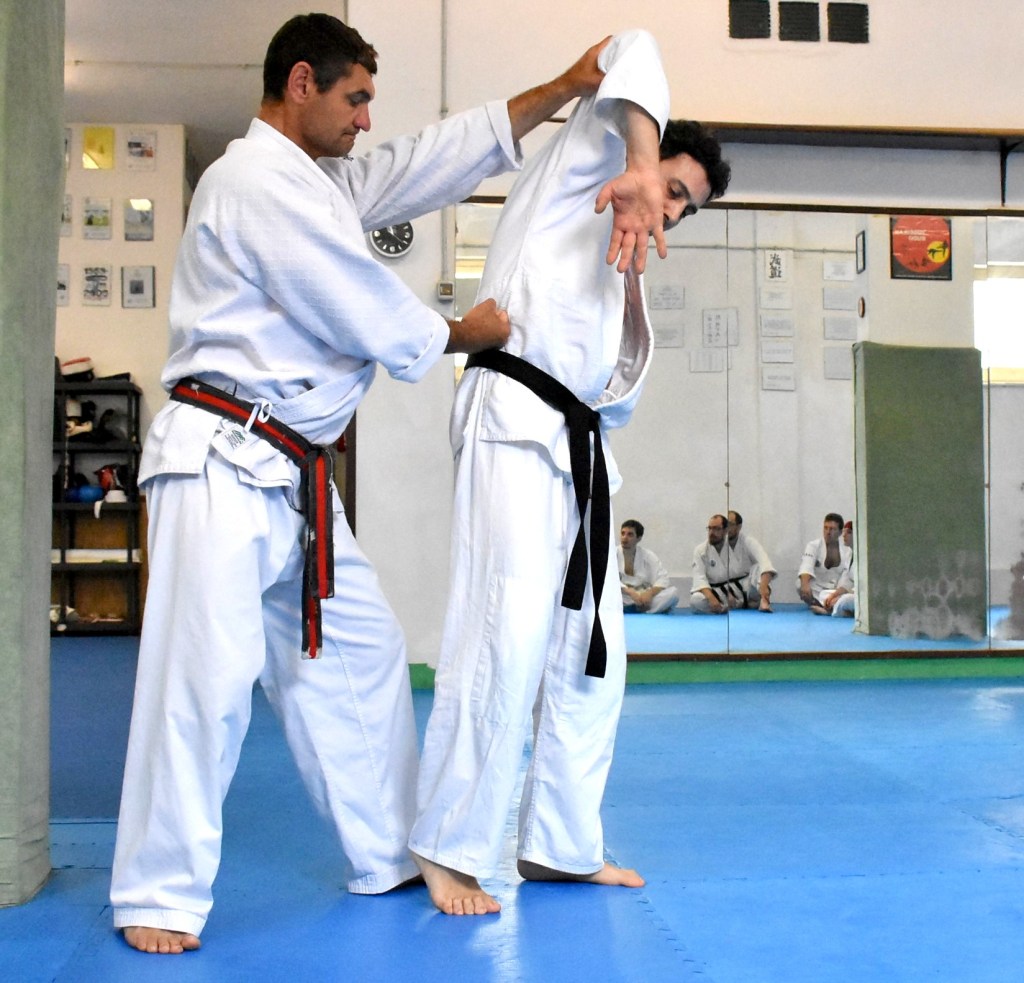
Notes
[1] See the article “Aikido Yoseikan – The School That Did Not Know Doshu” on Aikido Italia Network: https://atomic-temporary-18820446.wpcomstaging.com/2020/07/25/aikido-yoseikan-the-school-that-didnt-know-doshu/
[2] By “Kiai” we always mean all its levels of action, not simply the sound emission, or “Kakegoe”
[3] There is a draft of Kata, the Gō no Kata, complementary to the Jū no Kata, elaborated but not finished by Kanō sensei, which is unknown to most
[4] As explained in my previous essays on Aikido Italia Network, the word “Spirit” can be given different meanings based on the reader’s education. However, whatever the cause or significance attributed, “Spirit” works when used correctly
[5] As mentioned in the previous note, there are different interpretations to these things, but they all work.
[6] See note [1]
[7] Jitsu (実) and Kyō (京) are concepts parallel to Omote and Ura, Tatemae and Honme. Jitsu is the outside that is representative of what is inside, the inside that is projected to the outside, the state of full and ready. Kyō is void, lack of energy, pause. In Martial Arts, Jitsu is a positive state in which one is able to act, Kyō, on the other hand, is a moment of weakness or the moment of inspiration, in which we are vulnerable.
[8] Deviation of the technique through the use of body cuts and edges.

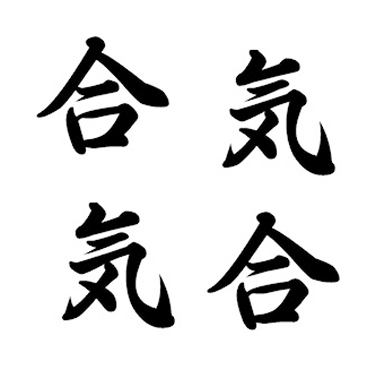
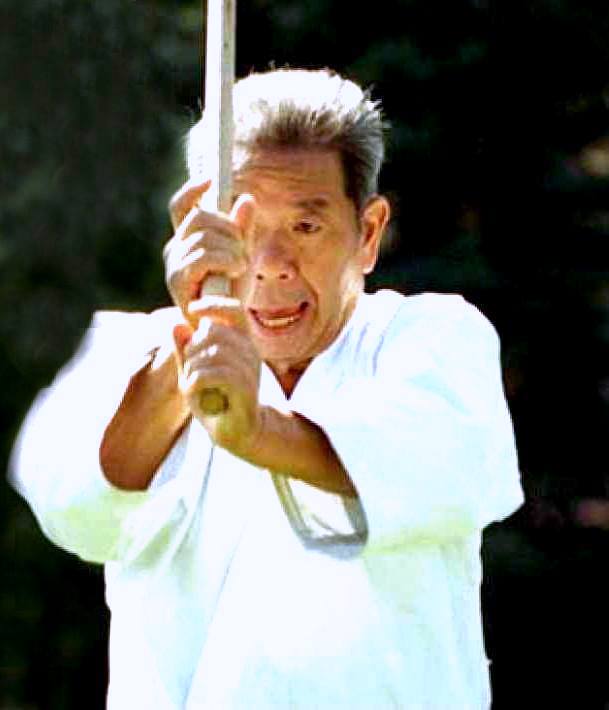
[…] Kiai and Aiki – Aikidō and the Indivisible Divided […]